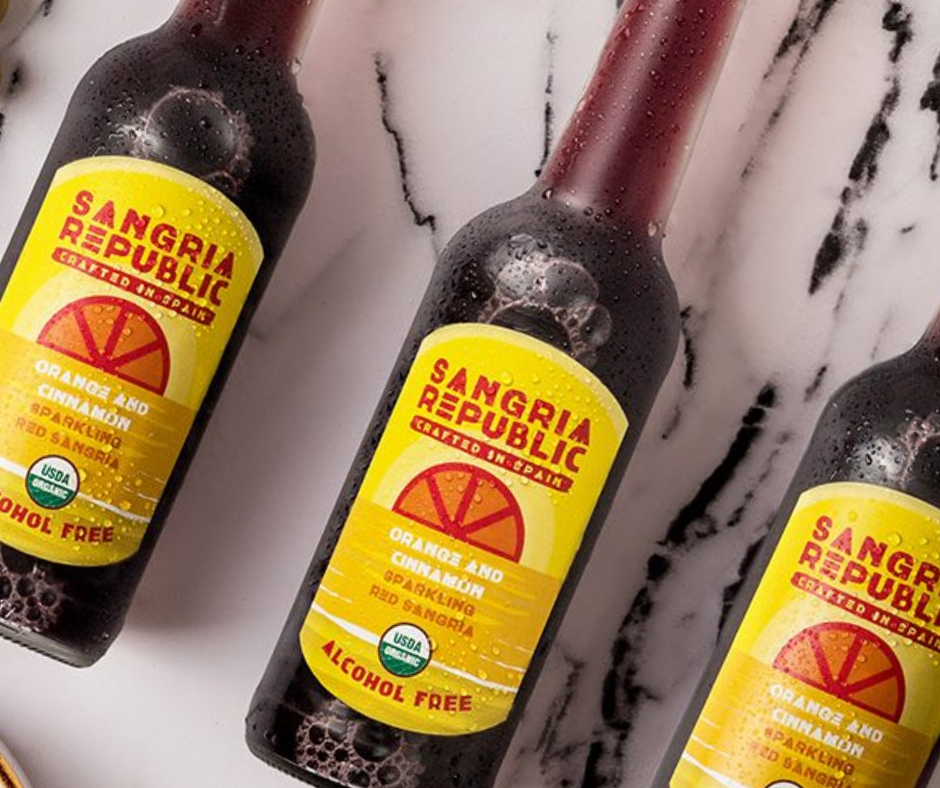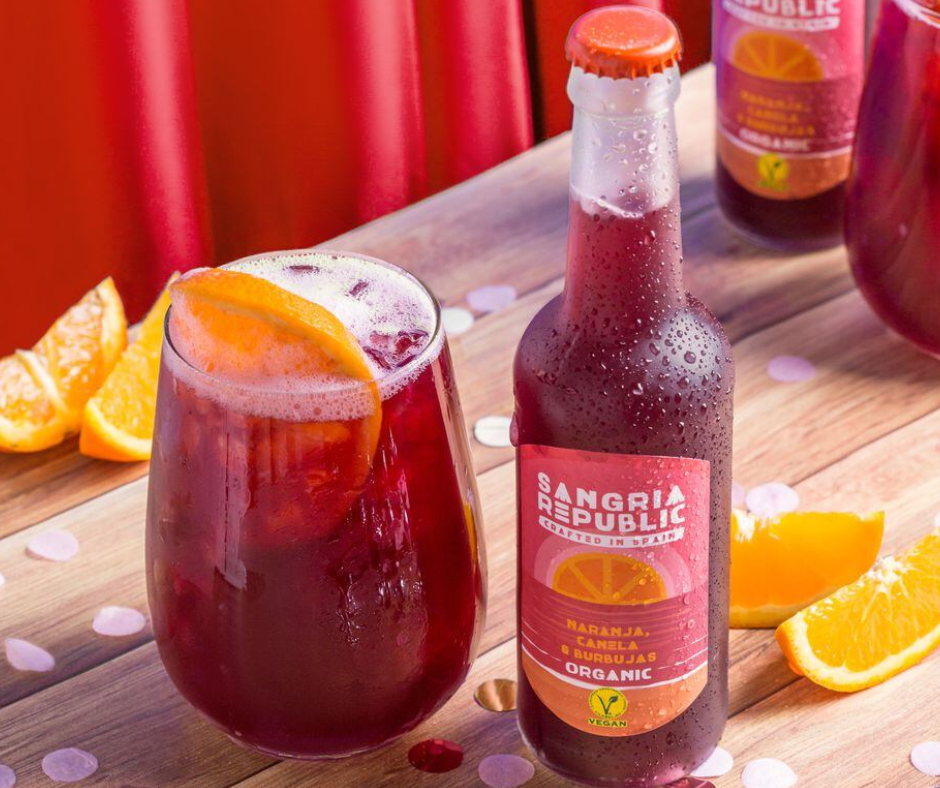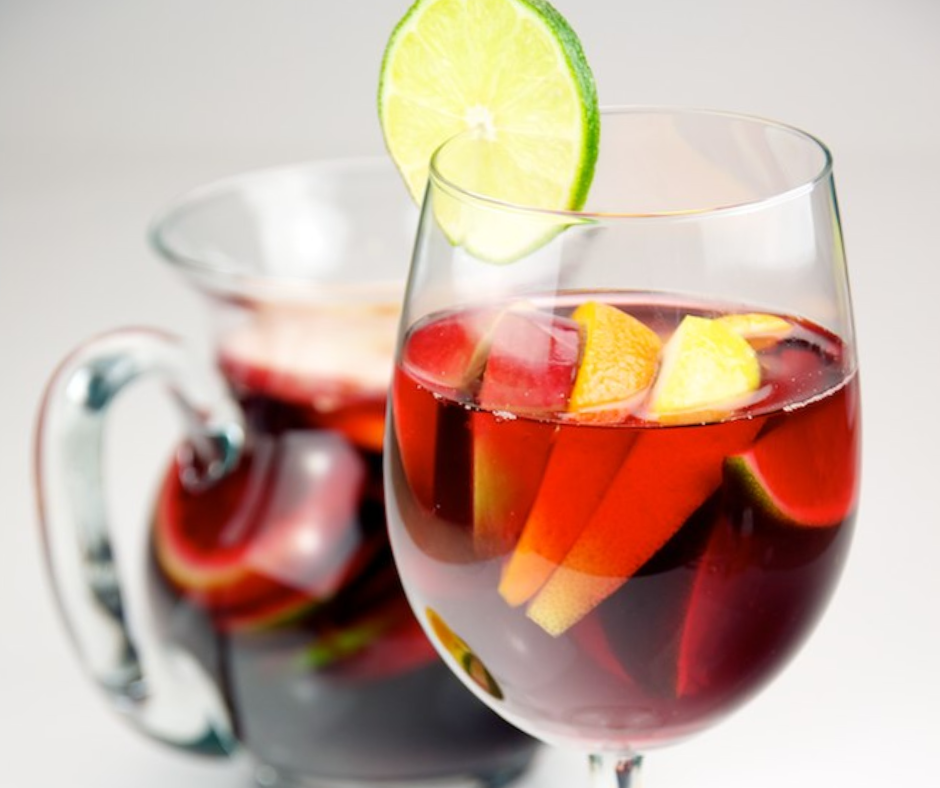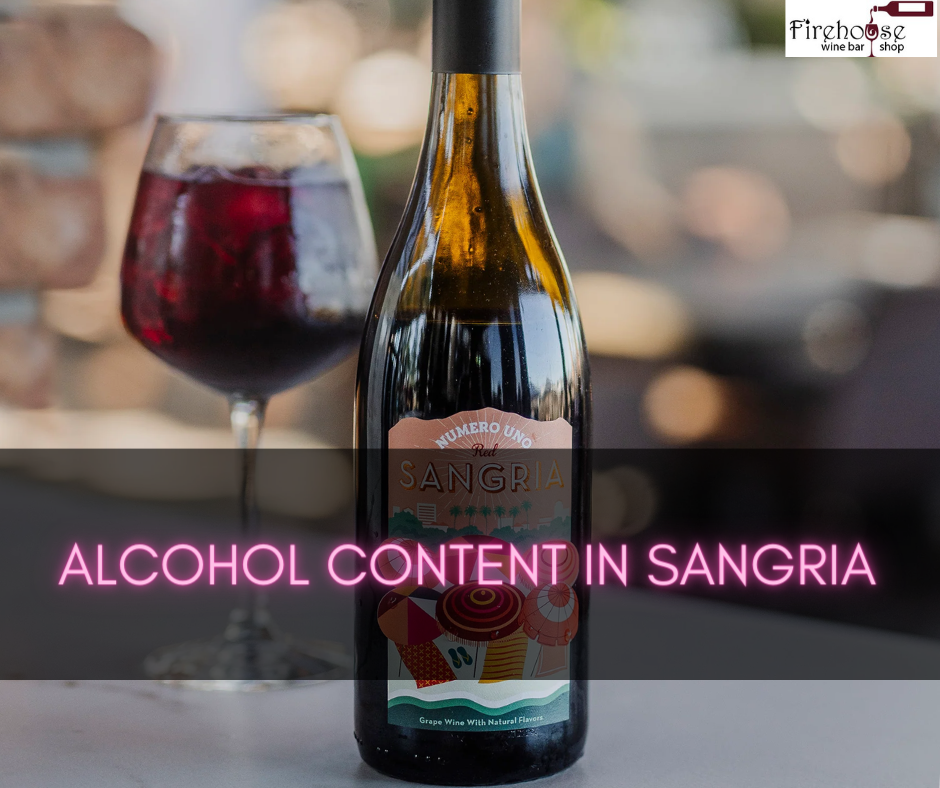Introduction
Sangria is a popular and refreshing beverage known for its fruity and vibrant colors. Whether enjoyed under the sun in a garden or at a lively celebration, Sangria is a versatile companion. However, it is important to consider the Alcohol Content In Sangria, as it can vary widely and have significant effects on your drinking experience.
Why Is Alcohol Content Important In Sangria?
The alcohol content of a drink plays a crucial role in determining its potency. It affects the taste, strength, and overall beverage experience. Understanding the alcohol content in Sangria is essential for making informed decisions and ensuring responsible drinking.
Understanding The Potency Of The Alcohol Content In Sangria
In Europe, specifically the European Union, there are legal restrictions on the alcohol content in bottled Sangria. According to EU law, Sangria must have an alcoholic strength by volume of less than 12% vol. This limitation ensures that Sangria does not reach higher alcohol levels and maintains a more moderate potency.
It is important to note that Sangria made with red wine is stronger than white wine punches. This is because red wine generally has a higher alcohol content than white wine. Additionally, different variations of Sangria might have varying levels of alcohol, depending on the ingredients used and the preferences of the mixologist or the person preparing it.
When purchasing or making Sangria, you must know the alcohol content and choose a version that suits your preferences and tolerance. Sangria with a lower alcohol content can be ideal for casual and daytime occasions, while versions with higher alcoholic strength are better suited for more festive and evening events.
Always remember to drink responsibly and be conscious of your alcohol intake, especially when consuming Sangria or any alcoholic beverage. Enjoy the fruity flavors and vibrant colors of Sangria, but ensure you drink in moderation to fully appreciate its refreshing qualities without overindulging.

Red Wine
The Role Of Red Wine In The Alcohol Content In Sangria
Red wine plays a significant role in determining the Alcohol Content In Sangria. Compared to white wine, red wine generally has a higher alcohol volume (ABV). This means a red sangria is usually much stronger than one made with white wine.
The traditional sangria recipe typically calls for a red wine base, with Tempranillo-based wine from the Iberian Peninsula in Spain being the classic choice. This red wine sets the foundation for the flavors and potency of the Sangria.
Factors That Influence The Alcohol Content Of Red Wine Used In Sangria
Several factors contribute to the alcohol content of red wine used in Sangria. These include the grape variety, the region where the grapes are grown, and the aging process. The grapes used to produce red wine can contain more natural sugars, which are then converted into alcohol during fermentation.
Additionally, the length of fermentation and the fermentation conditions, such as temperature and yeast strains used, can also affect the alcohol content. Winemakers can control and adjust these variables to achieve the desired alcohol levels in the final red wine product.
It is important to note that the alcohol content of red wine can vary among different bottles and brands. Some red wines may have a higher ABV than others. When selecting red wine for your Sangria, it is advisable to check the alcohol percentage listed on the bottle.
By understanding the role of red wine and the factors influencing its alcohol content, you can make informed choices when crafting or selecting a sangria to suit your preferences and ensure a delightful and balanced drinking experience. Remember to drink responsibly and be aware of your alcohol intake when enjoying Sangria or any alcoholic beverage.
Spirits
Adding Spirits To Raise The Alcohol Level In Sangria
Sangria is a flavorful and refreshing beverage often enjoyed during social gatherings and summer parties. While the base of Sangria is typically wine, the alcohol content can be enhanced by adding spirits. This allows you to create a stronger and more potent sangria to satisfy your guests’ preferences.
Adding spirits such as brandy, rum, or liqueurs can significantly increase the alcohol level in Sangria. These spirits add depth and complexity to the flavor profile and contribute to the drink’s overall potency. Incorporating spirits into your sangria recipe can elevate the alcohol content and create a more robust and enjoyable drinking experience.
Popular Spirits Used In Sangria And Their Alcohol Content
When selecting spirits to include in your sangria recipe, it is essential to consider their alcohol content. Here are some popular spirits used in Sangria and their approximate alcohol by volume (ABV):
- Brandy: Brandy is a common choice for adding depth and richness to Sangria. It typically has an ABV ranging from 35% to 60%, depending on the specific brand and style. The higher the ABV of the brandy, the greater the impact it will have on the overall alcohol content of your Sangria.
- Rum: Rum is another spirit that pairs well with the fruity flavors of Sangria. It is available in various styles and strengths, with ABVs typically ranging from 35% to 50%. Dark or aged rums have a higher ABV than white or spiced ones.
- Liqueurs: Liqueurs come in various flavors and ABVs, usually ranging from 15% to 40%. They can add sweetness, complexity, and a touch of herbal or fruity notes to your Sangria. Some popular choices include orange, cherry, or herbal liqueurs like Amaretto or herbal digestifs.
- Fortified wines: Fortified wines like port or Madeira can also elevate the Alcohol Content In Sangria. These wines have an alcohol content of around 16% to 24%, thanks to the addition of higher-proof spirits during the winemaking process.
Incorporating these spirits into your sangria recipe allows you to create a well-balanced and flavorful drink with a boosted alcohol content. However, it’s crucial to remember that the overall potency of your Sangria will depend on the amount of spirits added and the total volume of the drink.
Remember to enjoy Sangria responsibly, savor the flavors, and be mindful of the alcohol content when serving and consuming this delightful beverage.

Sangria’s Potency: Alcohol Breakdown
The Use Of Fortified Wines In Boosting Sangria’s Potency
Sangria, a popular and refreshing beverage, can be taken up a notch by adding fortified wines to increase its alcohol content. Fortified wines have added distilled spirits, such as brandy or rum, during winemaking. These spirits enhance the flavor profile of Sangria and contribute to its overall potency.
Fortified wines, with their higher alcohol content, are an excellent choice for those looking to elevate the potency of their Sangria. By incorporating these wines into the recipe, you can create a drink that packs a stronger punch and satisfies your guests’ preferences. The addition of fortified wines not only increases the alcohol content but also adds depth and complexity to the flavor profile of the Sangria.
Notable Fortified Wines And Their Alcohol Levels
When selecting fortified wines to use in your sangria recipe, it is important to consider their alcohol levels. Here are some notable fortified wines and their approximate alcohol by volume (ABV):
- Marsala: Marsala is a fortified wine with an ABV of 20%. It is often aged in wooden barrels, similar to the solera system, and classified as dry, medium-dry, or sweet based on its sweetness.
- Port: Port is a well-known fortified wine with an ABV of 20%. It is produced in Portugal and has various styles, including Tawny Port and Late Harvest Dessert Wine.
- Madeira: Madeira is another fortified wine with an ABV of 20%. It undergoes a unique aging process that involves exposing the wine to heat, resulting in a rich and complex flavor profile.
By using these fortified wines in your sangria recipe, you can not only increase its alcohol content but also introduce new flavors and nuances. However, it is important to remember that the potency of the Sangria will depend on the amount of fortified wine used and the overall volume of the drink.
Enjoy your Sangria responsibly, savor the flavors, and appreciate the enhanced potency by adding fortified wines.
Liqueurs And Cordials
Enhancing Sangria’s Flavor And Alcohol Content With Liqueurs And Cordials
When elevating the flavor and Alcohol Content In Sangria, liqueurs and cordials are excellent choices. These alcoholic beverages add a touch of sweetness and complexity to the drink and contribute to its overall potency.
Liqueurs and cordials are often made by infusing fruits, spices, herbs, or other flavorings into a base spirit, such as brandy or rum. This infusion process creates a wide range of unique and flavorful options that can enhance any sangria recipe.
You can add depth and nuance to the flavor profile by incorporating liqueurs and cordials into your Sangria. The possibilities are endless, whether it’s a citrus-infused liqueur for a refreshing twist or a rich and velvety chocolate cordial for a decadent touch.
Common Liqueurs And Cordials Used In Sangria And Their Alcohol Content
Just as the flavor options are broad, so too is the range of alcohol content in liqueurs and cordials. These spirits can fall between 10 to 55 percent alcohol by volume (ABV), allowing you to control the potency of your Sangria.
Some common liqueurs and cordials used in Sangria include:
- Triple Sec: With an ABV of around 30%, Triple Sec is a popular choice for adding a hint of orange flavor to Sangria.
- Peach Schnapps: This sweet liqueur typically has an ABV of 15-20% and adds a delightful fruity note to your Sangria.
- Amaretto: Known for its distinct almond flavor, Amaretto has an ABV of around 25% and can add a touch of warmth to your Sangria.
- Cherry Liqueur: With an ABV of 15-30%, cherry liqueur brings a bold and tangy taste to your Sangria.
It’s important to note that the alcohol content of your Sangria will depend on the specific liqueurs and cordials used, as well as the amount added to the recipe.
Experimenting with different liqueurs and cordials allows you to tailor your Sangria to your preferences and create a unique and flavorful beverage. Whether you’re looking for a tropical twist, a burst of berry goodness, or a hint of spice, liqueurs and cordials are key ingredients for enhancing the flavor and alcohol content of your Sangria. Cheers to a delicious and potent concoction!

Sangria’s Potency: Alcohol Content In Sangria
Influencing Sangria’s Potency Through Fruits And Fruit Juices
Regarding the potency of Sangria, the fruits and fruit juices used play a significant role. The alcohol content in Sangria is largely determined by the type and amount of alcohol added, but the fruits and fruit juices have the potential to enhance or dampen their potency.
Fruits, especially ripe ones, contain natural sugars that can ferment and convert into alcohol. When added to Sangria, these fruits release their juices, which mix with the alcohol and sweeten the entire mix. This natural fermentation process can increase the alcohol content of the drink, making it more potent.
Fruits With Higher Alcohol Absorption And Their Impact On The Overall Alcohol Content
Not all fruits have the same alcohol-absorbing potential. Some fruits, like berries and stone fruits, are more likely to absorb alcohol due to their composition. When added to Sangria, these fruits contribute to the flavor profile and increase its alcohol content.
For example, berries like blueberries, strawberries, and raspberries have a higher alcohol absorption rate. When these fruits are macerated and mixed into the Sangria, they release their juices and absorb some alcohol, further intensifying the drink’s potency.
On the other hand, fruits with higher water content, like melons and citrus fruits, may have less of an impact on the alcohol content. While they add refreshing flavors and contribute to the overall experience of drinking Sangria, their lower alcohol absorption properties mean they are less likely to increase the drink’s potency significantly.
It’s important to note that while fruits can enhance the Alcohol Content In Sangria, the overall strength will also depend on the concentration of alcohol in the base mixture and any additional liqueurs or cordials used. A balance must be struck to ensure the desired potency is achieved without overpowering the drink.
By understanding the influence of fruits and fruit juices on Sangria’s potency, you can experiment with different combinations to create a beverage that suits your taste preferences. Whether you prefer a more potent blend with fruits that have higher alcohol absorption or a milder option with a focus on refreshing flavors, the choice is yours. Cheers to enjoying Sangria responsibly and savoring its delicious flavors!
Control Alcohol Level
Managing Sangria’s Potency Through Dilution And Serving Size
To control the alcohol level in Sangria, dilution, and serving size are crucial factors. Diluting the Sangria with additional non-alcoholic mixers like carbonated water, soda, or even fruit juice can help reduce its overall alcohol content. This dilution technique is particularly useful when serving Sangria to a diverse group of guests with different tolerance levels or preferences for milder alcoholic beverages.
Additionally, adjusting the serving size of the Sangria can also impact its potency. Serving smaller portions allows for a more controlled consumption of alcohol, while larger servings may result in higher intake. Communicating and encouraging responsible drinking practices is essential to ensure everyone can enjoy the Sangria while being mindful of their alcohol consumption.
Balancing Flavors While Controlling The Alcohol Level
When making Sangria, it’s important to balance the desired flavors and the alcohol level. The choice of alcohol, such as red wine or brandy, should complement the fruits and other ingredients without overpowering them. Experimenting with different combinations of fruits, juices, and alcohol types can help achieve the desired taste while managing the potency.
By understanding the influence of fruits and fruit juices on Sangria’s potency and considering dilution and serving size, one can create a customized sangria experience that suits their taste preferences and responsible drinking habits. Whether opting for a more potent blend with fruits that have higher alcohol absorption or a milder option with a focus on refreshing flavors, the possibilities are endless. Enjoy the process of crafting your perfect Sangria and savoring its delicious flavors responsibly. Cheers!
Safe Consumption And Alternatives
Responsible Drinking And Enjoying Sangria
When enjoying Sangria, it’s important to prioritize responsible drinking. Sangria can be a delightful and refreshing beverage, but it contains alcohol and should be consumed responsibly. Here are a few tips for safe consumption:
- Know your limits: Understand your alcohol tolerance and drink in moderation. Drinking too much Sangria can lead to intoxication and impaired judgment.
- Pace yourself: Sip your Sangria slowly and take breaks in between servings. This will help you better gauge your alcohol intake and prevent excessive drinking.
- Stay hydrated: Drink water alongside your Sangria to stay hydrated. Alcohol can dehydrate the body, and staying hydrated can help minimize any negative effects.
- Don’t drink and drive: If you plan on enjoying Sangria at a social gathering, arrange for a sober driver or utilize public transportation or rideshare services to ensure you get home safely.
Non-alcoholic Variations And Alternatives To Traditional Sangria
Sangria doesn’t have to be alcoholic to be delicious. Non-alcoholic variations of Sangria offer a refreshing and flavorful alternative for those who prefer to avoid or limit their alcohol consumption. Here are a few ideas for non-alcoholic sangria alternatives:
- Sparkling fruit punch: Replace the alcoholic base with sparkling fruit punch or a combination of fruit juices. Add sliced fruits like oranges, berries, or peaches to enhance the flavors.
- Mocktail mix: Create a mocktail version of Sangria by combining fruit juices, soda water, and a splash of citrus for a refreshing twist. Garnish with fresh herbs or fruit slices for an added touch.
- Herbal infusion: Infuse herbal teas with fresh fruits and sweetness, such as hibiscus or chamomile. Let the flavors meld together in the refrigerator for a few hours before serving over ice.
- Virgin sangria: Use non-alcoholic wine or grape juice as the base and mix in your favorite fruits, such as apples, grapes, and citrus. Add a splash of fruit juice for extra sweetness, if desired.
These non-alcoholic alternatives to traditional Sangria are perfect for guests of all ages and can be enjoyed guilt-free. Experiment with different combinations of fruits and juices to create your signature mocktail that suits your taste preferences.
Remember, the enjoyment of Sangria lies not just in its alcoholic content but also in its vibrant flavors and beautiful presentation. Whether you indulge in the traditional boozy version or a non-alcoholic alternative, drink responsibly and savor every sip.
Conclusion
Summary Of Factors Affecting The Alcohol Content In Sangria
The Alcohol Content In Sangria can vary depending on several factors. The European Union law states that Sangria must have an alcoholic strength by volume of less than 12% vol.. This regulation ensures that Sangria remains a mildly alcoholic beverage. However, the actual alcohol content can be influenced by the type and amount of wine used, the addition of liqueurs or spirits, and the duration of the fruit infusion process.
It’s important to note that unripe fruit used in Sangria may not release enough juice to mix with the alcohol and enhance the overall flavor. This is why using ripe and flavorful fruits is crucial to achieving the desired taste and allowing the juices to sweeten and flavor the mix. Additionally, the type of wine used can greatly impact the potency of the Sangria. Garnacha (Grenache), Pinot Noir, and other recommended red wines contribute to a rich and robust flavor profile.
Tips For Creating Balanced And Enjoyable Sangria Recipes
To create a balanced and enjoyable sangria, it’s essential to consider the following tips:
- Choose the right wine: Opt for Garnacha (Grenache) or Pinot Noir as the base for red Sangria. These wines have the perfect balance of flavors and acidity to complement the fruits and other ingredients.
- Mix fruits wisely: Select ripe and juicy fruits that complement each other. Citrus fruits like oranges and lemons add a refreshing zing, while berries and stone fruits contribute sweetness and color.
- Enhance with aromatics: Experiment with aromatic herbs like mint or basil or spices like cinnamon or nutmeg to add depth and complexity to your Sangria.
- Control the sweetness: Avoid adding excessive sugar or sweet liqueurs. Instead, let the natural sweetness of the fruits shine through. You can also balance the sweetness with a citrus juice or honey splash.
- Chill and rest: Allow the Sangria to chill and rest in the refrigerator for at least a few hours before serving. This melts the flavors and ensures a refreshing and well-rounded taste.
By following these tips, you can create a mouthwatering sangria that is balanced, flavorful, and enjoyable for everyone. Remember to drink responsibly, pace yourself, and stay hydrated when enjoying this delightful beverage. Whether you prefer the traditional alcoholic version or a non-alcoholic alternative, Sangria is a versatile drink that can be customized to suit your taste preferences and occasion. Cheers!
FAQ: Alcohol Content in Sangria
Q: What is Sangria?
A: Sangria is a refreshing, wine-based drink that originated in Spain. It is made by mixing red or white wine with fruit, juice, sweeteners, and sometimes brandy or other spirits.
Q: How much alcohol does Sangria typically contain?
A: The alcohol content of Sangria can vary depending on the ingredients used and how it is prepared. Generally, Sangria has an alcohol volume of less than 12%, as specified by the European Union law.
Q: What ingredients can increase the alcohol content of Sangria?
A: Adding spirits like brandy, rum, or vodka to Sangria can increase its alcohol content significantly. A Sangria made with peach brandy, for example, will have a higher alcohol content than one made with just wine.
Q: How can I determine the alcohol content of my Sangria?
A: It can be difficult to accurately determine the alcohol content of Sangria because it varies depending on the recipe. To make sure you are not consuming too much alcohol, it is recommended to drink Sangria in moderation and be aware of its potency.
Q: Is it safe to drink Sangria?
A: Yes, as long as you drink it in moderation and are aware of its alcohol content. Always drink Sangria responsibly, and never drink and drive.

Andre Lotz immigrated to the United States from South Africa almost 20 years ago. Still, he didn’t feel truly at home until he settled in Mobile—a city that reminds him of his childhood home of Fish Hoek on the southern cape of Africa.

